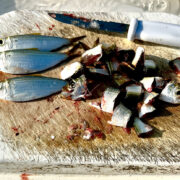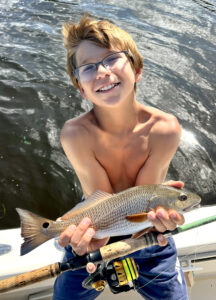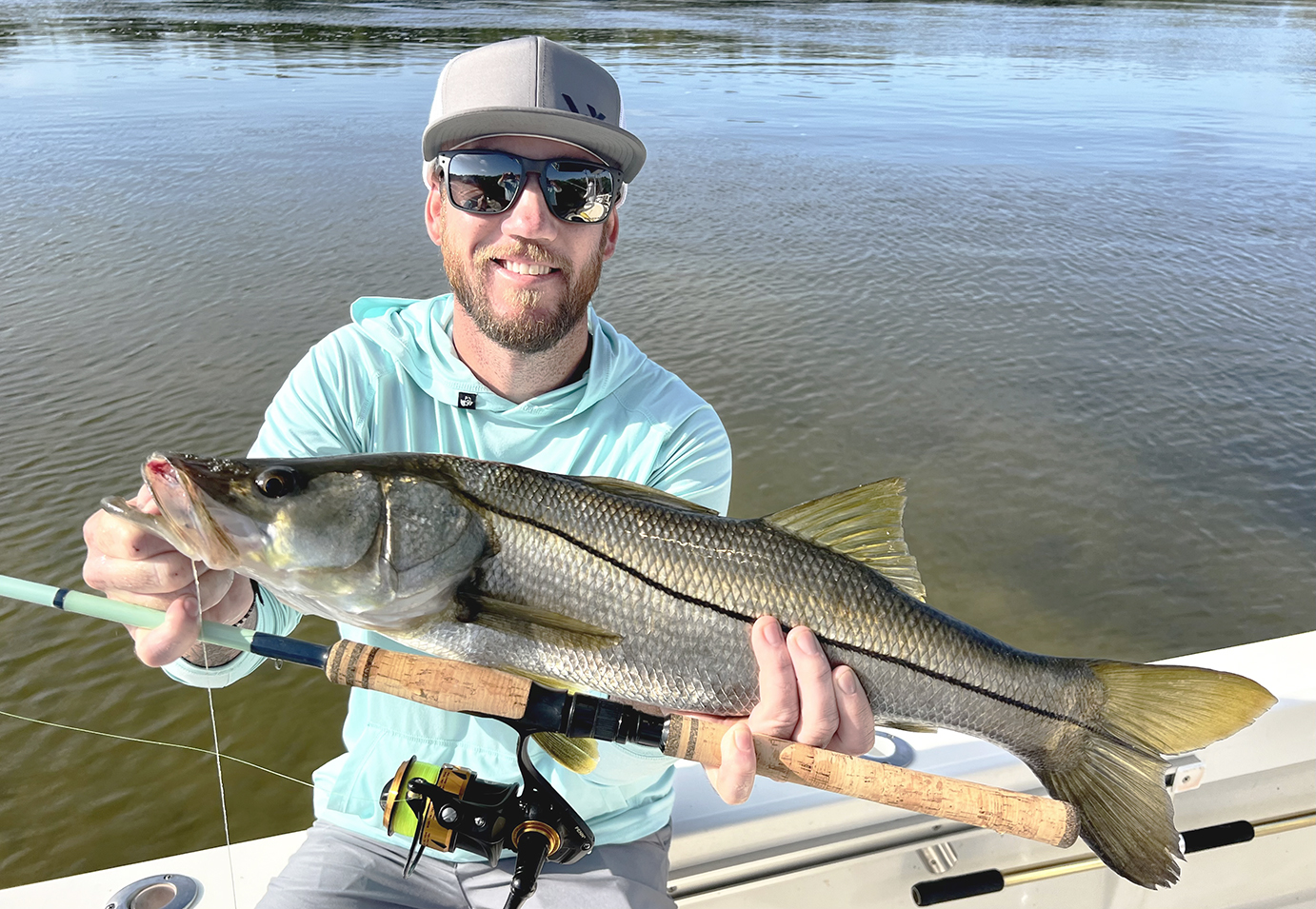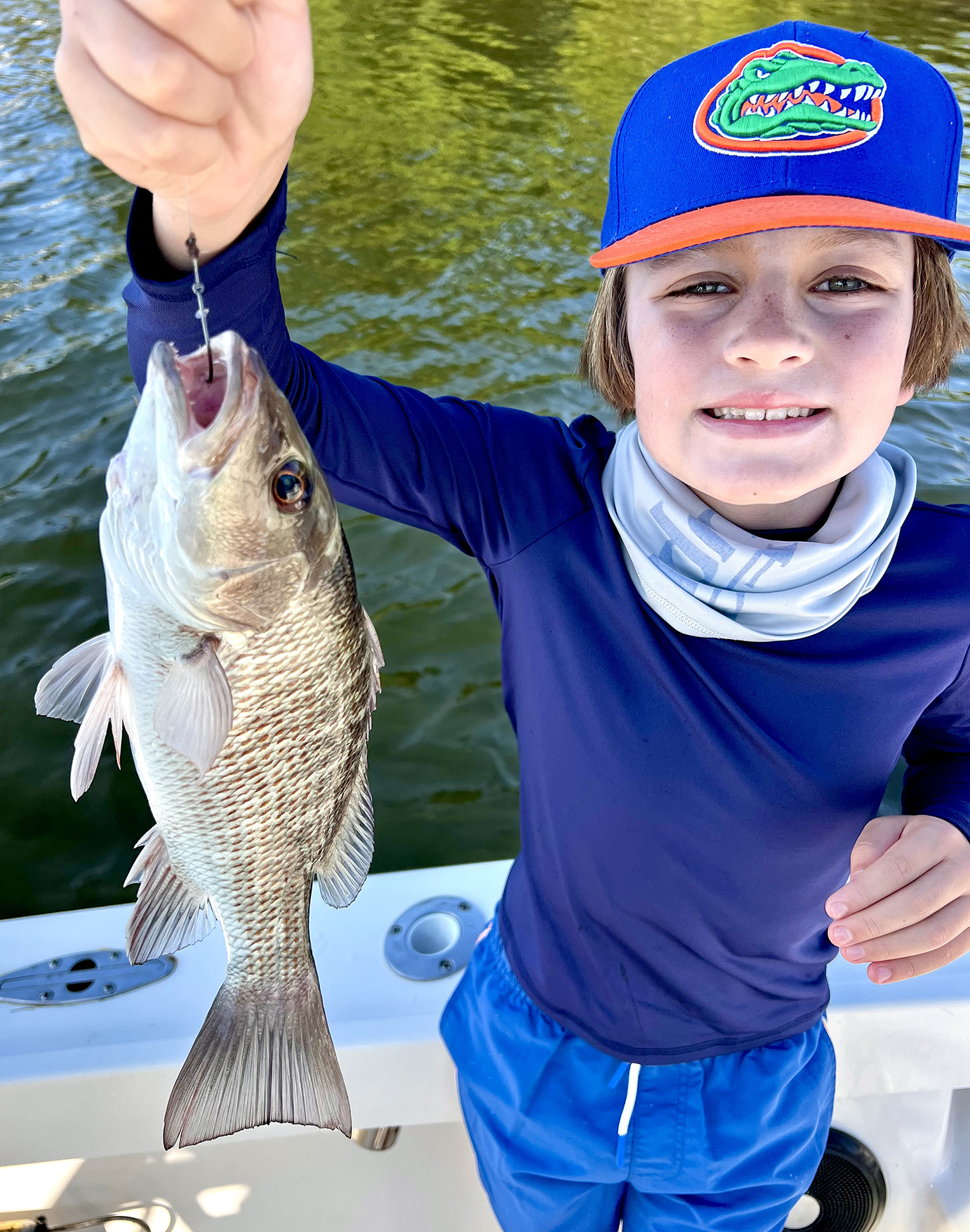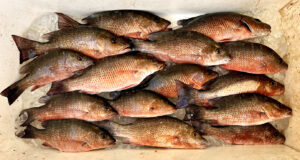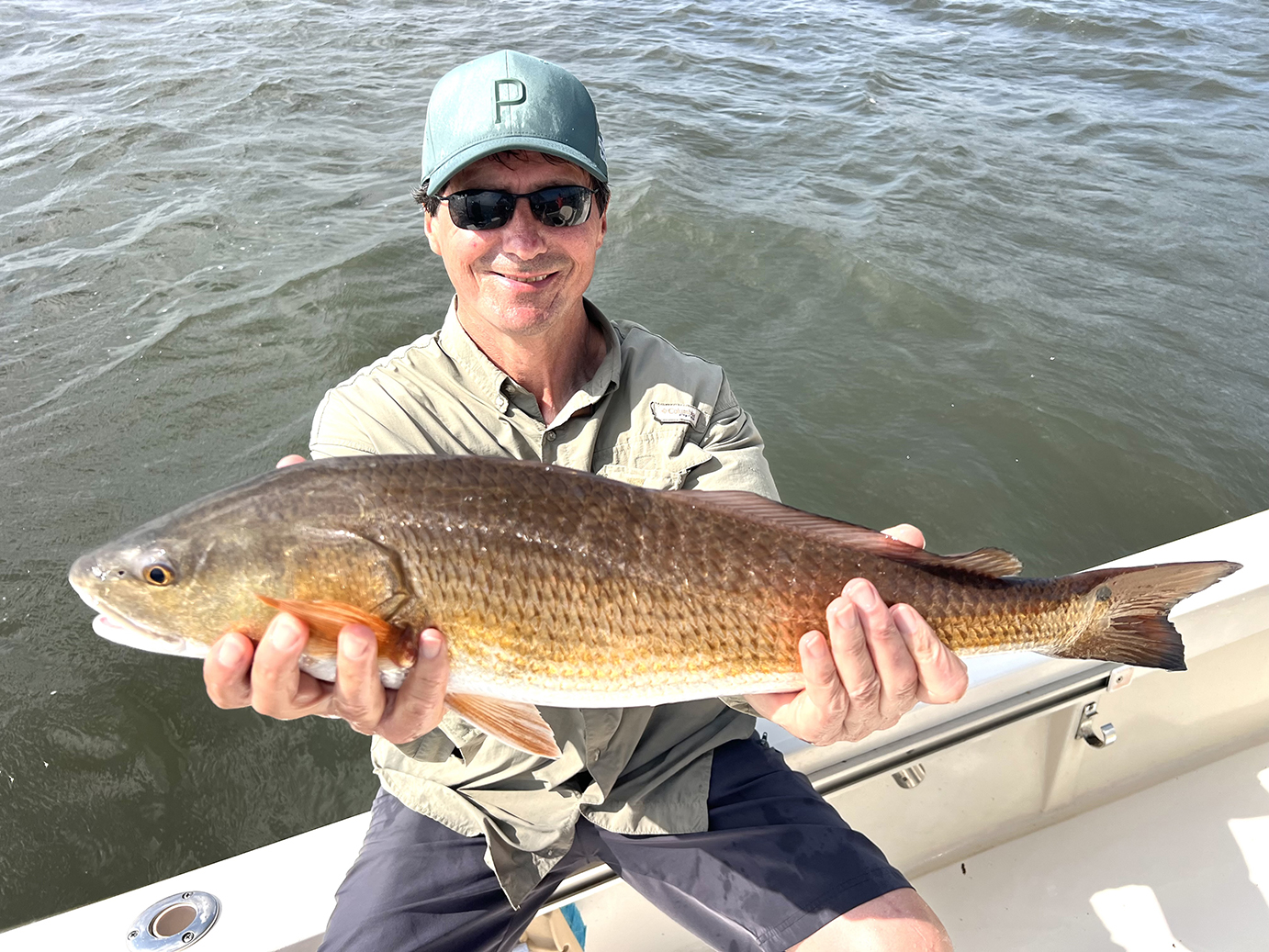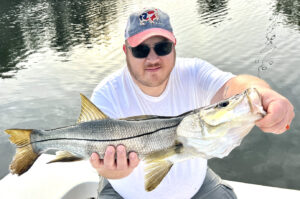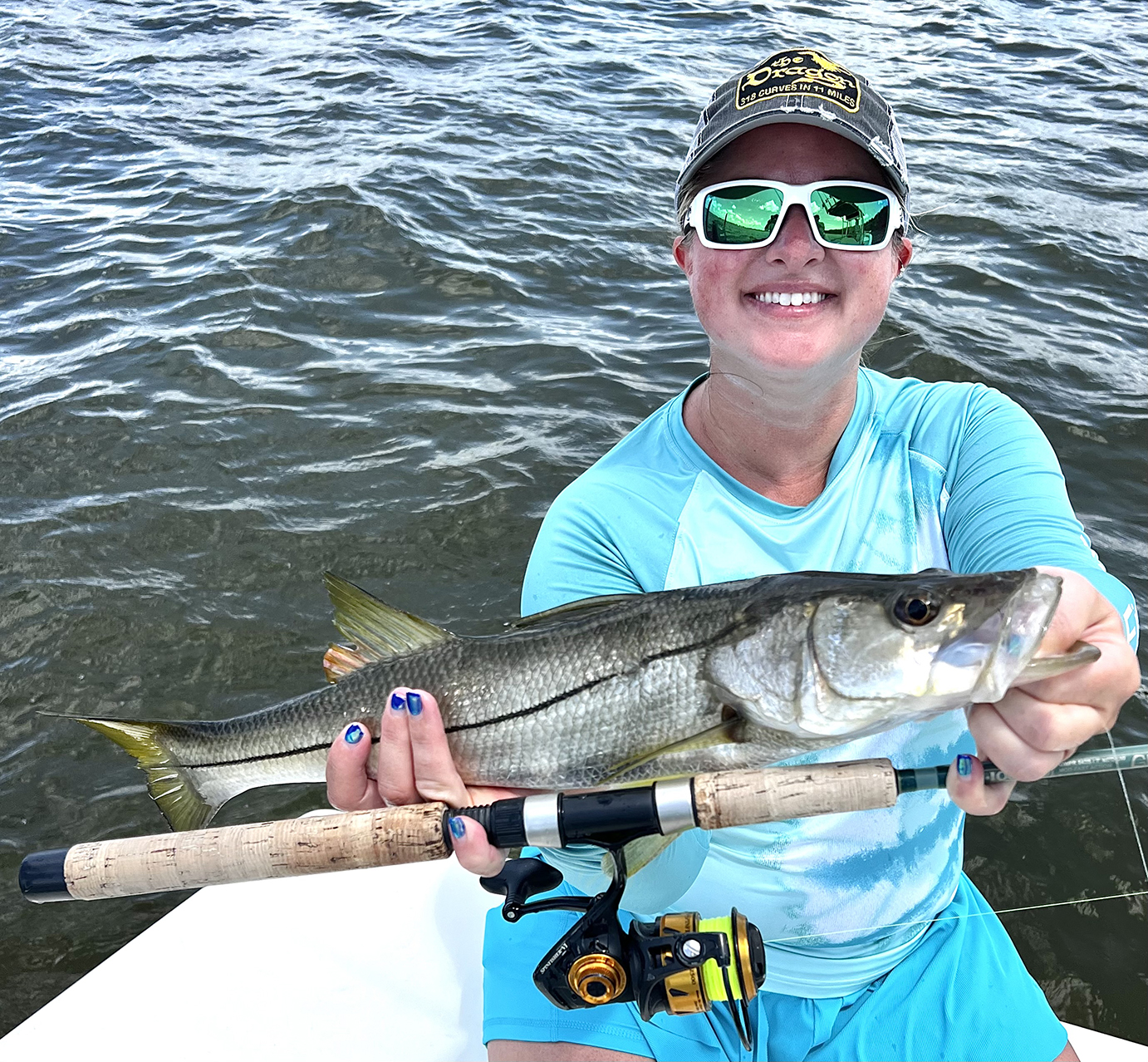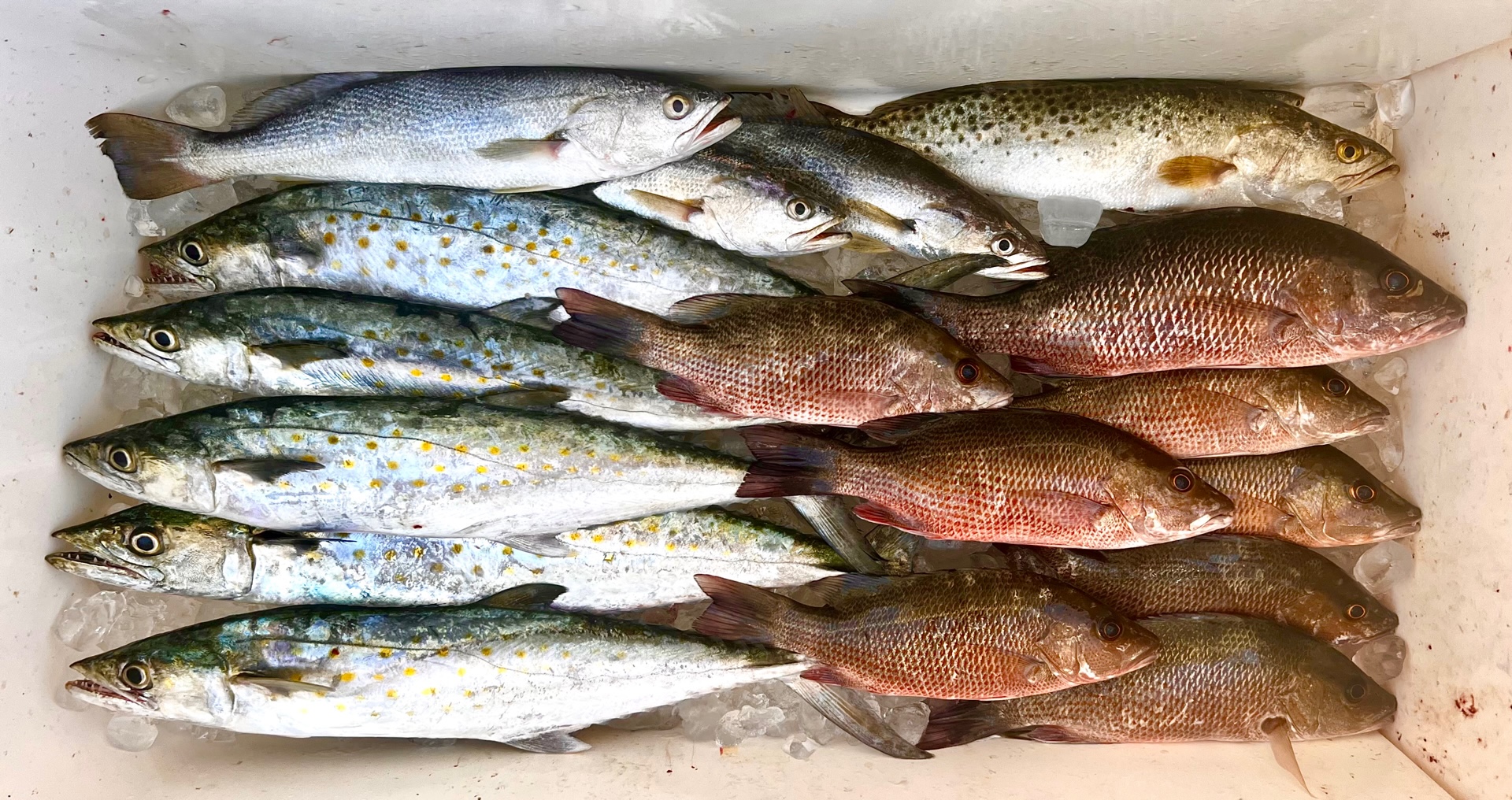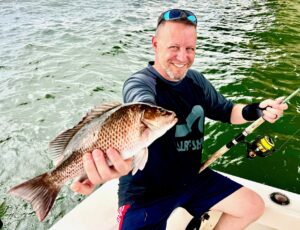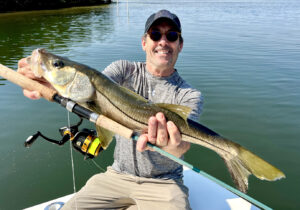Chum and They Will Come!
Not to sound like Dr. Seuss but, when I’m fishing, “I chum here, I chum there, I chum everywhere.” Whether chumming with fresh cut bait or live bait, I am admittedly a chumming maniac!
When I take people fishing, I don’t just go to a spot, set up and have them cast baits out and wait for bite. I get busy chumming the water in the area to get the action going. Fish are attracted to the smell and to the sounds of other fish feeding in their general area. When fishing certain locations in the deeper waters of Tampa Bay, the scent of freshly cut scaled sardines and threadfin herring along with the blood it generates attracts a wide variety of fish. I chum year-round, but in the warmer months there’s definitely a larger variety of species to be caught.
When I’m fishing one of the many deep-water grass flats throughout the bay this time of year on a moving tide, my constant chumming draws in spotted seatrout, silver trout, Spanish mackerel, bonnethead sharks, blacktip sharks, ladyfish and the occasional cobia or jack crevalle. As I sit there cut bait chumming, I’ll occasionally toss in a few live bait chummers and as the tide takes it down current, more fish are attracted towards the boat and caught. While using this method, it’s possible to sit in one spot and catch fish for hours on end, but once you notice the action slowing, it’s time to move on.
When fishing one the many bridges running across Tampa Bay, if you’re not chumming, you’re missing out. Bridge pilings May through October are magnets for mangrove snapper, large spotted seatrout, Spanish mackerel, cobia, tarpon, ladyfish, and jack crevalle. Many times, when fishing bridge pilings a cobia will follow your chum slick right up to the boat. A cobia might also chase one of your hooked fish back to the boat while trying to take it. In either scenario, be prepared by having a heavy rod and reel combo at the ready to toss a bait at it.
Another bonus of fishing bridge pilings is, you never know when you might hook into a tarpon without trying. I’ve been chumming at a bridge many times for other species and had a tarpon start ripping fishing line off a spool. When this happens, usually the tarpon wins the battle by swimming to the other side of the bridge and cutting the line on a piling. There are times, however, when I’ve gotten them to the boat by either working them back to my side of the bridge or by being at a part of the bridge where I can get my boat under and give chase. Keep in mind, I’m using light tackle so having a tarpon jump six or more times and still getting it to the boat is exhilarating.
Once I leave the deep-water and move into the shallows to start fishing the mangrove shorelines and oyster beds in pursuit of snook and redfish, the chumming doesn’t stop, I just change my approach. Instead of cut bait chumming, I live bait chum.
When fishing a cut, mangrove point or oyster bed during a strong tidal flow, chumming with live bait lets you know if fish are in the area, and if they are feeding. Once snook or redfish start popping the chummers, then it’s just a matter of casting a bait to that spot for a spontaneous hookup.
Continuous live bait chumming when you encounter a school of redfish can lead to hours of non-stop catching, not fishing! The key is to not stop but only toss some out every five minutes or so. You want to feed them an appetizer not a full entrée. The most redfish clients have ever landed aboard Afishionado was 96 in just five hours. That was back in October of 2007. Sadly, catches like those are long gone. The fishing pressure in Tampa Bay has skyrocketed since then. Outings where you catch 30-50 redfish are considered an outstanding day now, but I digress.
Bottom line: When I go fishing and want non-stop action, I chum like a maniac. If I don’t chum, they won’t come!
Afishionado, “Adventures in Fishing.”
If you enjoy reading my fishing reports, you should check out my most recent post. Please like my Facebook Page to receive updates. For charter reservations call/text Wade at 813-286-3474.


